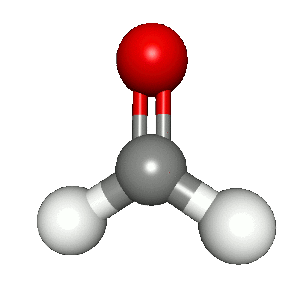
Formaldehyde Exposure
Tracking this here: https://github.com/publiclab/wherewebreathe/issues/123
Nick will post: Hal levin Critical piece
Formaldehyde is a colorless, flammable gas with a distinct odor. Current common sources of formaldehyde in the home include wood floor finishes, pressed-wood products, wallpaper and paints, and the combustion and oxidation of other hydrocarbons (including cigarettes, oil, natural gas, and emissions from laser printers and photocopiers). The formaldehyde in these products can off-gas into the surrounding environment and be inhaled.
The US Agency for Toxic Substances and Disease Registry (ATSDR) maintains toxicological profiles for a number of substances, including formaldehyde. The following chart (Figure 1) summarizes the scientific evidence on the health effects of varying concentrations of formaldehyde exposure as most recently updated by ATSDR in 2010. In their home environments, participants in the WWB study are most likely to be exposed at lower levels described in this chart (up to 0.6 ppm, or 600 ppb). This summary suggests that there is strong scientific evidence for formaldehyde having a range of human health effects at these lower levels of exposure: nasal and eye irritation, impaired short-term memory, change in pulmonary function, and exacerbation of asthma or allergies.
Figure 1. Existing evidence, health effects of breathing formaldehyde in humans and in animals. Reproduced from Addendum to the Toxicological Profile for Formaldehyde by the Agency for Toxic Substances and Disease Registry, 2010, p. 2. a changes in pulmonary variables from spirometry testing (FEV, FVC) b decreased performance on short-term memory tests c decreased breathing rate and/or increased airway resistance d listlessness, hunched appearance, uncoordinated movement, ataxia e altered serum biochemistry and/or liver histopathology f decreased testicular weight, testicular atrophy, altered sperm motility/morphology, decreased serum testosterone, decreased diameter of seminiferous tubules g decreased motor activity, altered open field behavior, impaired learning and memory
To these symptoms on which scientific consensus already exists, we add a number of candidate symptoms observed at higher levels of formaldehyde exposure (nausea, headaches, throat and skin irritation, cough, respiratory discomfort) and also those symptoms reported to WWB investigator Nick Shapiro during his fieldwork with individuals living in FEMA-distributed trailers after Hurricane Katrina (insomnia, nightmares, digestive trouble, and changes in sense of smell or taste).
Bibliography:
1.Agency for Toxic Substances and Disease Registry (ATSDR). Toxicological profile for Formaldehyde. (Draft for Public Comment). (2008). 2.Dales, R. E., Schweitzer, I., Bartlett, S., Raizenne, M. & Burnett, R. Indoor Air Quality and Health: Reproducibility of Respiratory Symptoms and Reported Home Dampness and Molds using a Self-Administered Questionnaire. Indoor Air 4, 2–7 (1994). 3.Hanrahan, L. P., Dally, K. A., Anderson, H. A., Kanarek, M. S. & Rankin, J. Formaldehyde vapor in mobile homes: a cross sectional survey of concentrations and irritant effects. American journal of public health 74, 1026–7 (1984). 4.Kanazawa, A. et al. Association between indoor exposure to semi-volatile organic compounds and building-related symptoms among the occupants of residential dwellings. Indoor Air 20, 72–84 (2010). 5.Liu, K. S., Huang, F. Y., Hayward, S. B., Wesolowski, J. & Sexton, K. Irritant effects of formaldehyde exposure in mobile homes. Environmental health perspectives 94, 91–4 (1991). 6.Mori, M. et al. Changes in subjective symptoms and allergy state among medical students exposed to low-level formaldehyde 6 months after completion of a gross anatomy dissection course. Environ Health Prev Med 18, 386–393 (2013). 7.Ritchie, I. M. & Lehnen, R. G. Formaldehyde-related health complaints of residents living in mobile and conventional homes. American journal of public health 77, 323–8 (1987). 8.Sahlberg, B., Norbäck, D., Wieslander, G., Gislason, T. & Janson, C. Onset of mucosal, dermal, and general symptoms in relation to biomarkers and exposures in the dwelling: a cohort study from 1992 to 2002. Indoor Air 22, 331–338 (2012). 9.Saijo, Y. et al. Symptoms in relation to chemicals and dampness in newly built dwellings. International archives of occupational and environmental health 77, 461–70 (2004). 10.Takigawa, T. et al. Relationship between indoor chemical concentrations and subjective symptoms associated with sick building syndrome in newly built houses in Japan. Int Arch Occup Environ Health 83, 225–235 (2010). 11.Thun, M. J., Lakat, M. F. & Altman, R. Symptom survey of residents of homes insulated with urea--formaldehyde foam. Environmental research 29, 320–34 (1982). 12.Wargocki, P., Wyon, D. P., Baik, Y. K., Clausen, G. & Fanger, P. O. Perceived air quality, sick building syndrome (SBS) symptoms and productivity in an office with two different pollution loads. Indoor air 9, 165–79 (1999).
